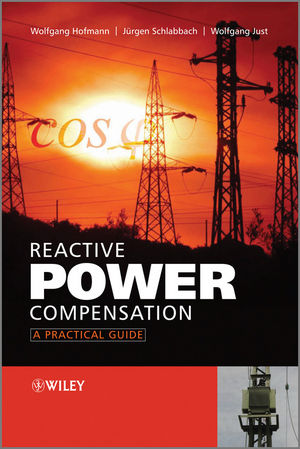 [内容简介]The area of reactive power compensation is gaining increasing importance worldwide. If suitably designed, it is capable of improving voltage quality significantly, meaning that losses in equipment and power systems are reduced, the permissible loading of equipment can be increased, and the over-all stability of system operation improved. Ultimately, energy use and CO2 emisson are reduced.
[内容简介]The area of reactive power compensation is gaining increasing importance worldwide. If suitably designed, it is capable of improving voltage quality significantly, meaning that losses in equipment and power systems are reduced, the permissible loading of equipment can be increased, and the over-all stability of system operation improved. Ultimately, energy use and CO2 emisson are reduced.
This unique guide discusses the effects of reactive power on generation, transmission and distribution, and looks at the compensation of existing installations in detail. It outlines methods for determination of reactive power and answers the questions that arise when controlling it, for example, at parallel operation with generators. There is also a chapter devoted to installation, maintenance and disturbances.
[目次]1 Basics of Reactive Power 1
2 Reactive Power Consumers 15
3 Effect of Reactive Power on Electricity Generation, Transmission and Distribution 23
4 Reactive Power in Standard Energy Contracts 37
5 Methods for the Determination of Reactive Power and Power Factor 43
6 Improvement of Power Factor 53
7 Design, Arrangement and Power of Capacitors 61
8 Determination of Required Power of Capacitors 75
9 Types of Reactive Power Compensation 87
10 Compensation of Existing Installations 117
11 Control of Reactive Power 123
12 Discharging Devices for Power Capacitors 147
13 Protection of Capacitors and Compensations 157
14 Switching of Capacitors 165
15 Installation, Disturbances and Maintenance 177
16 Reactive Power Compensation in Electrical Plants with Generators 189
17 Effects of Perturbation Considering Especially the Impact of Harmonics on Power Factor Correction Capacitors 195
18 Resonances in Electrical Power Systems 205
19 Reactor-Protected Capacitors and Filter Circuits 213
20 Dynamic Reactive Power Compensation Systems 241
21 Compensation Effects at Rectifiers 253
22 Environmental and Climate Protection Using Capacitors 263

 新书报道
新书报道